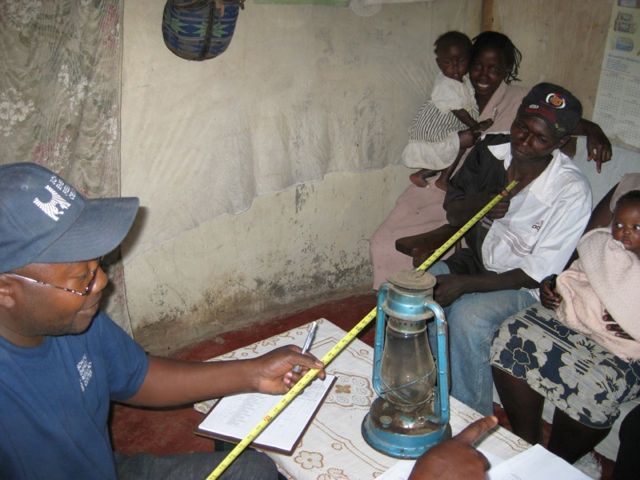Characterization of particulate matter size distributions and indoor concentrations from kerosene and diesel lamps
J. Apple†, R. Vicente†, A. Yarberry†, N. Lohse†, E. Mills*, A. Jacobson†, D. Poppendieck†
† Environmental Resources Engineering, Humboldt State University,
* Lawrence Berkeley National Laboratory, University of California
Lumina Project Technical Report #7
2010
Published in Indoor Air
Download Full Report [PDF]

Over one-quarter of the world's population relies on fuel-based lighting. Kerosene lamps are often located in close proximity to users, potentially increasing the risk for respiratory illnesses and lung cancer. Particulate matter concentrations resulting from cook stoves have been extensively studied in the literature. However, characterization of particulate concentrations from fuel- based lighting has received minimal attention. This research demonstrates that vendors who use a single simple wick lamp in high-air-exchange market kiosks will likely be exposed to PM2.5 concentrations that are an order of magnitude greater than ambient health guidelines. Using a hurricane lamp will reduce exposure to PM2.5 and PM10 concentrations by an order of magnitude compared to using a simple wick lamp. Vendors using a single hurricane or pressure lamp may not exceed health standards or guidelines for PM2.5 and PM10, but will be exposed to elevated 0.02–0.3 micrometer particle concentrations. Vendors who change from fuel-based lighting to electric lighting technology for enhanced illumination will likely gain the ancillary health benefit of reduced particulate matter exposure. Vendors exposed only to ambient and fuel-based lighting particulate matter would see over an 80% reduction in inhaled PM2.5 mass if they switched from a simple wick lamp to an electric lighting technology.
Acknowledgments: The authors would like to acknowledge Kristen Radecsky, Peter Johnstone, and Jenny Tracy for collecting data in Kenya in 2008 and 2009. We thank Art Rosenfeld and the Blum Center for Developing Economies at the University of California at Berkeley for providing generous financial support for this research, through the U.S. Department of Energy under Contract No. DE-AC02-05CH11231.
